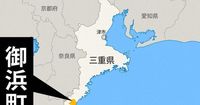On March 22, 2025, a disastrous bus accident occurred on National Route 42 in Ki-no-Kuni, Mihama Town, in Mie Prefecture around 8:30 PM, leaving one driver dead and injuring 21 passengers. The incident took place when a large highway bus, which was traveling from Wakayama Prefecture to Saitama Prefecture, crashed into a nearby windbreak forest, prompting multiple emergency calls from concerned residents.
According to local authorities, including the Mie Prefectural Police, the bus had a total of 23 individuals on board at the time of the accident. The driver, a 57-year-old man from Saitama, was killed in the crash, while the other 21 passengers were rushed to various hospitals in and outside Mie Prefecture for treatment. Notably, most of these passengers sustained minor injuries, indicating that the situation, while grave, could have been much worse.
Emergency services were quick to arrive at the scene following the accident reports received at 110 and 119. The area where the crash occurred is a straight road with one lane in each direction, a layout that can often contribute to such tragic incidents, especially at night.
As of late on March 22, officials were still investigating the exact circumstances that led to the accident. Reports indicated that the bus was part of a service operated by Seibu Kanko Bus, and details surrounding its condition at the time of the crash remained unclear.
Furthermore, the deadly incident raised immediate concerns regarding bus safety standards and the scrutiny under which long-distance transportation services operate. Past incidents have highlighted the importance of rigorous contractual and safety procedures to ensure passenger safety on long coaches traversed late at night.
Eyewitness accounts from nearby residents describe a significant impact, with some indicating that they heard the crash from their homes and rushed to assist where they could. Local emergency responders worked diligently in the aftermath to stabilize the scene and provide necessary medical care.
In Mie Prefecture, the local populace is mourning the loss of life due to such tragic circumstances. The repercussions of this accident extend beyond the immediate sorrow felt by the victims' families; it also engenders a community-wide reassessment of passenger transport safety and policies.
This bus accident highlights a grim reality for travelers relying on public transportation during long journeys. It raises questions: What exactly went wrong? Were the driver and passengers adequately prepared for the journey? The answers may lay in this ongoing investigation as authorities review driving records, safety checks, and operational protocols of the involved transportation company.
Representatives from Seibu Kanko Bus were unavailable for immediate comment as this sensitive situation unfolded. However, in interviews with local media, the urgency of the investigation was emphasized as families await the findings that may provide some clarity about the day’s tragic events.
While recovery efforts for affected passengers are underway, further steps to ensure safety in the future are imperative. Advocates for bus safety argue that more stringent guidelines must be upheld across the industry to prevent such unthinkable tragedies from occurring again.
As the investigation unfolds, the focus will undoubtedly shift between offering support to the injured and addressing the policies that allow such accidents to happen in the first place. Community vigils may soon be planned to honor the deceased and support those injured, fostering a sense of unity in a time of sorrow.
This accident serves as a stark reminder for the need for awareness about safety practices not just during travel but for those who manage transport services. How can the industry evolve to mitigate risk in the future? Stakeholders across the transportation framework are expected to rally for modifications and improvements as they come together in the aftermath of this calamity.
In a broader context, the accident also shines a light on the continuing challenges faced by public transport systems and encourages discussions on how to make roads safer for all travelers. It provokes the thought that changes in legislation or operational strategies might prevent future incidents.





